Master Microneedling Healing Stages for Optimal Recovery
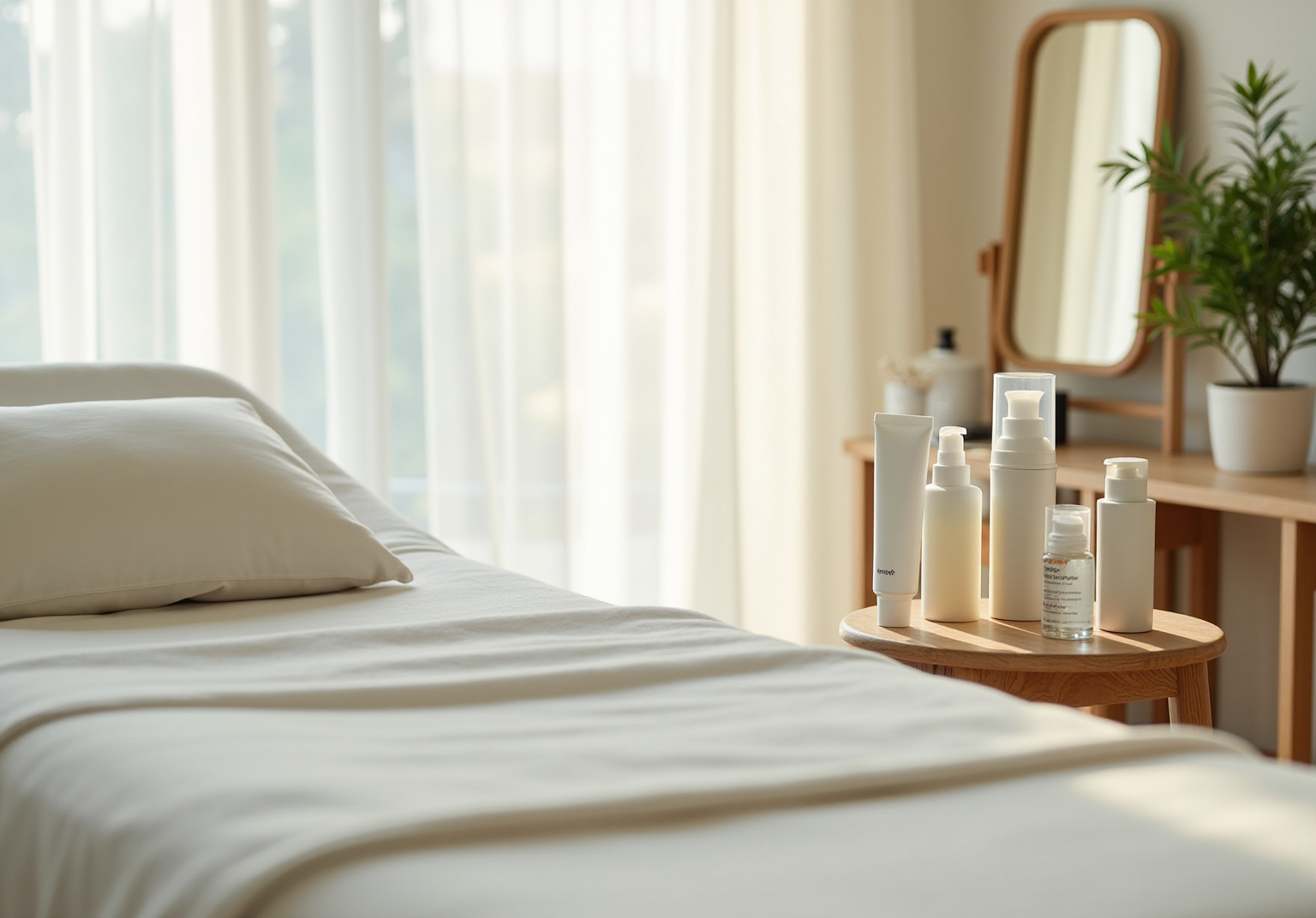
Overview
This article delves into the healing stages of microneedling and outlines strategies to optimize recovery for superior results.
Understanding the distinct recovery phases is essential, as it directly influences the effectiveness of the procedure.
Adhering to specific post-treatment care guidelines—such as avoiding sun exposure and maintaining hydration—is crucial for maximizing the benefits of microneedling.
By following these recommendations, patients can ensure a smooth healing process and achieve the desired outcomes.
Introduction
Microneedling has emerged as a revolutionary skincare treatment, recognized for its remarkable ability to rejuvenate the skin through the stimulation of collagen production. As individuals increasingly seek to enhance their skin's texture and diminish the visibility of scars and fine lines, grasping the essential healing stages of microneedling is crucial for achieving optimal results.
Navigating the recovery process, however, can be daunting; various factors influence the treatment's effectiveness. Thus, what proactive steps can clients take to ensure a smooth recovery and maximize the benefits of this innovative procedure?
Understanding these elements is not just beneficial but essential for anyone looking to invest in their skincare.
Understand Microneedling: Basics and Benefits
Microneedling, often referred to as collagen induction therapy, utilizes fine needles to create micro-injuries on the skin's surface, effectively triggering the body's natural healing response. This innovative procedure significantly boosts collagen and elastin production—essential proteins that help maintain a youthful and resilient appearance. The advantages of microneedling are extensive, encompassing:
- Improved skin texture
- Diminished visibility of scars and fine lines
- Enhanced absorption of topical products
Recent studies indicate that patients can experience notable improvements in skin appearance and health, particularly when adhering to recommended healing protocols. For example, clinical findings reveal that individuals may observe a substantial reduction in post-acne scarring after just two sessions, with further enhancements following additional treatments. Dermatologists stress the importance of adhering to post-treatment care during the microneedling healing stages to maximize these benefits, emphasizing that proper recovery is vital for achieving optimal results. Recommendations include:
- Avoiding direct sun exposure for a week
- Using a gentle cleanser
- Refraining from makeup for 24 to 48 hours post-treatment
Common side effects, such as redness and swelling, typically persist for a few hours to a day, which is important to consider when discussing the microneedling healing stages and setting realistic expectations for clients. Moreover, microneedling can be combined with Platelet-Rich Plasma (PRP) therapy to accelerate recovery and enhance collagen production. The cost of microneedling sessions generally ranges from $200 to $800, depending on the specific treatment required. By understanding these foundational aspects of microneedling, clients can fully appreciate its transformative potential within their skincare regimen.
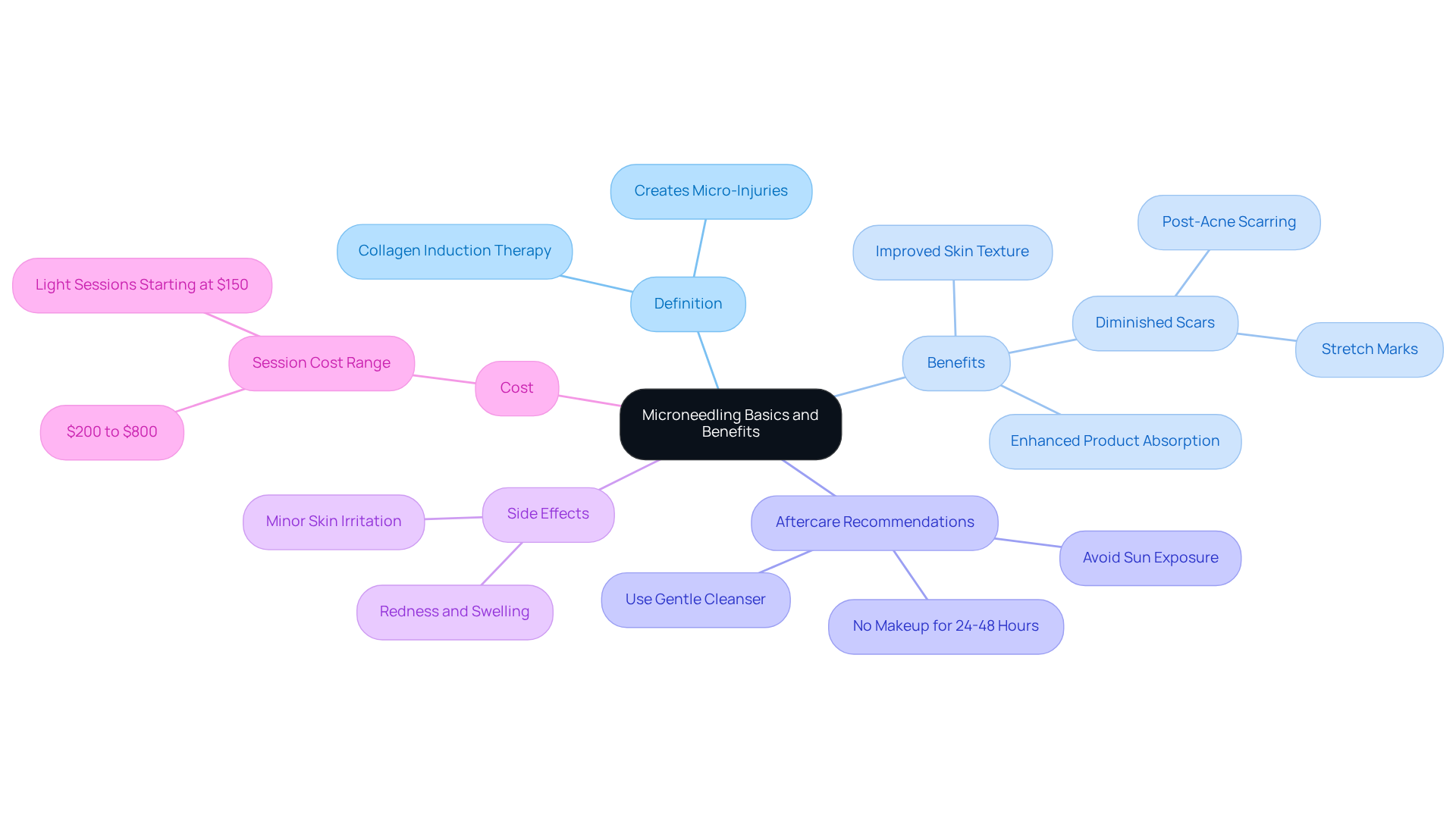
Follow Post-Procedure Care Instructions
Following SQT Bio-Microneedling, adhering to specific care instructions is crucial for recovery and achieving optimal results. To ensure a seamless healing process, consider the following key steps:
- Keep the Area Clean: For the first 24 hours, gently cleanse the treated area with a mild, pH-balanced cleanser to avoid irritation.
- Avoid Makeup: Refrain from applying makeup or skincare products for at least 48 hours post-treatment. This allows the surface to heal properly and prevents irritation.
- Moisturize: Utilize a mild, hydrating serum or moisturizer recommended by your practitioner. Apply it several times throughout the day to maintain moisture and support the healing process. Notably, the SQT treatment enhances the absorption of topical products by up to 3,000%, underscoring the importance of proper hydration for optimal recovery.
- Sun Protection: Daily application of a broad-spectrum sunscreen with SPF 30 or greater is essential. Avoid direct sunlight for at least two weeks following the procedure, as the treated area will be especially vulnerable to UV damage.
- Avoid Heat: For at least 48 hours, steer clear of saunas, hot tubs, and intense workouts to minimize inflammation and prevent irritation. Additionally, limit intense physical activity for 24-48 hours to avoid skin irritation from sweating.
- Avoid Certain Ingredients: For several days post-treatment, refrain from using skincare products that contain retinoids, AHAs, BHAs, alcohol, or essential oils to prevent irritation and facilitate recovery.
By meticulously following these guidelines, you will ensure a smooth process during the microneedling healing stages and optimal outcomes, allowing you to fully benefit from the innovative SQT Bio-Microneedling treatment at Tsavo Wellness. During the microneedling healing stages, expect some flaking or peeling around days 3-5; this is a normal part of the recovery process and indicates tissue regeneration.
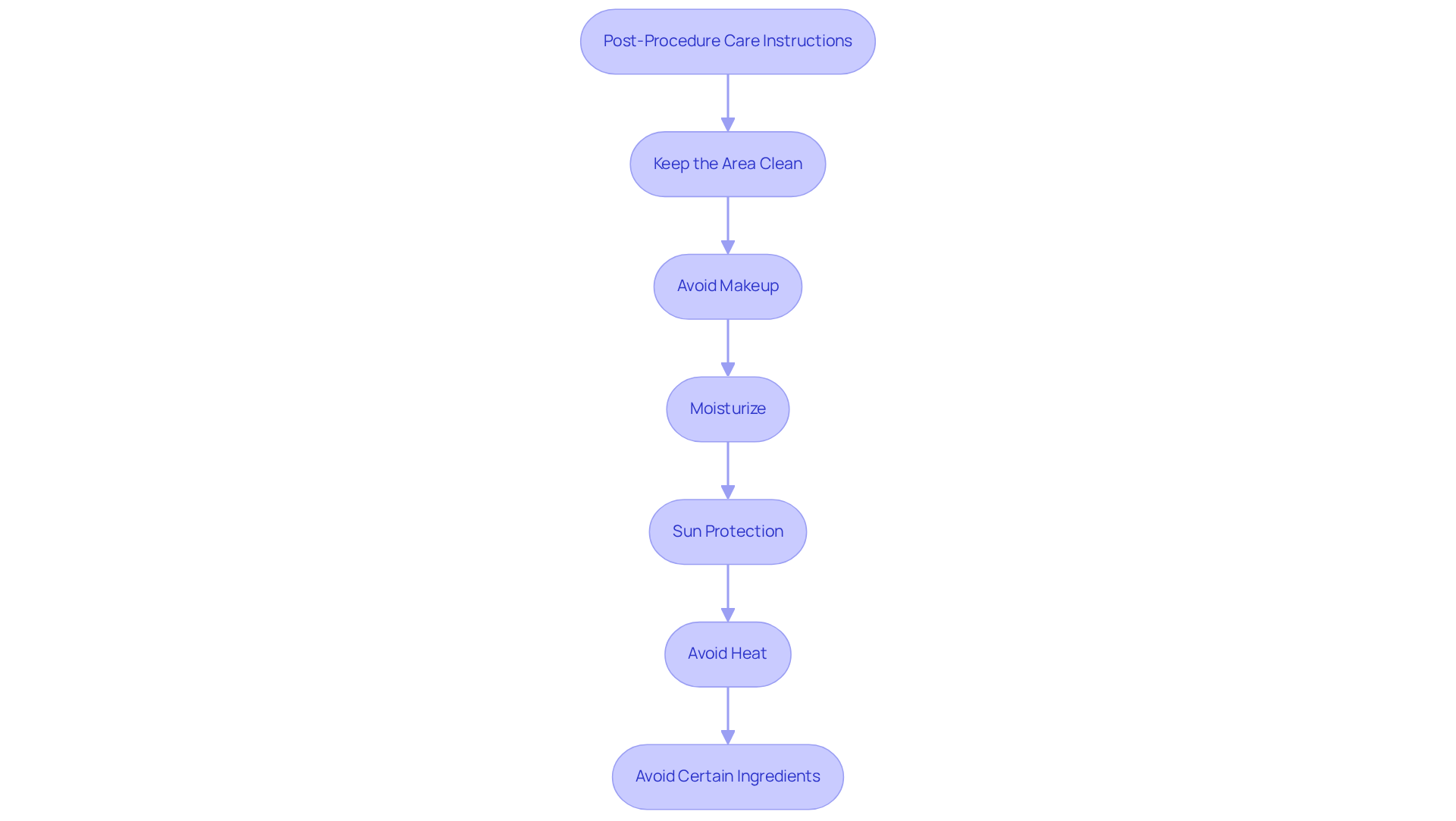
Navigate the Healing Stages: What to Expect
Microneedling recovery unfolds in distinct stages, each marked by specific characteristics that are crucial for understanding the healing process:
- Immediate Aftermath (Day 1): Following the procedure, one can expect noticeable redness and slight swelling, akin to a mild sunburn. This reaction is typical and should diminish within a few hours, indicating the body's natural response to treatment.
- Days 2-3: Redness may persist, accompanied by dryness or light flaking as the surface begins its recovery process. It is essential to continue moisturizing and to avoid any form of exfoliation during this time to promote healing.
- Days 4-7: As recovery advances, the surface will begin to feel smoother, with any remaining redness considerably diminishing. Maintaining hydration during this phase is vital to support ongoing recovery.
- Weeks 2-4: During this period, collagen production increases, resulting in noticeable enhancements in texture and tone. Protecting your skin from sun exposure and adhering to a gentle skincare routine are paramount for optimal results.
Understanding the microneedling healing stages equips clients to effectively navigate their healing journey, enabling them to recognize when to seek further advice if complications arise. As Goran Gacovski emphasizes, "While the treatment itself is relatively quick and mild, the secret to maximizing your results lies in proper aftercare.
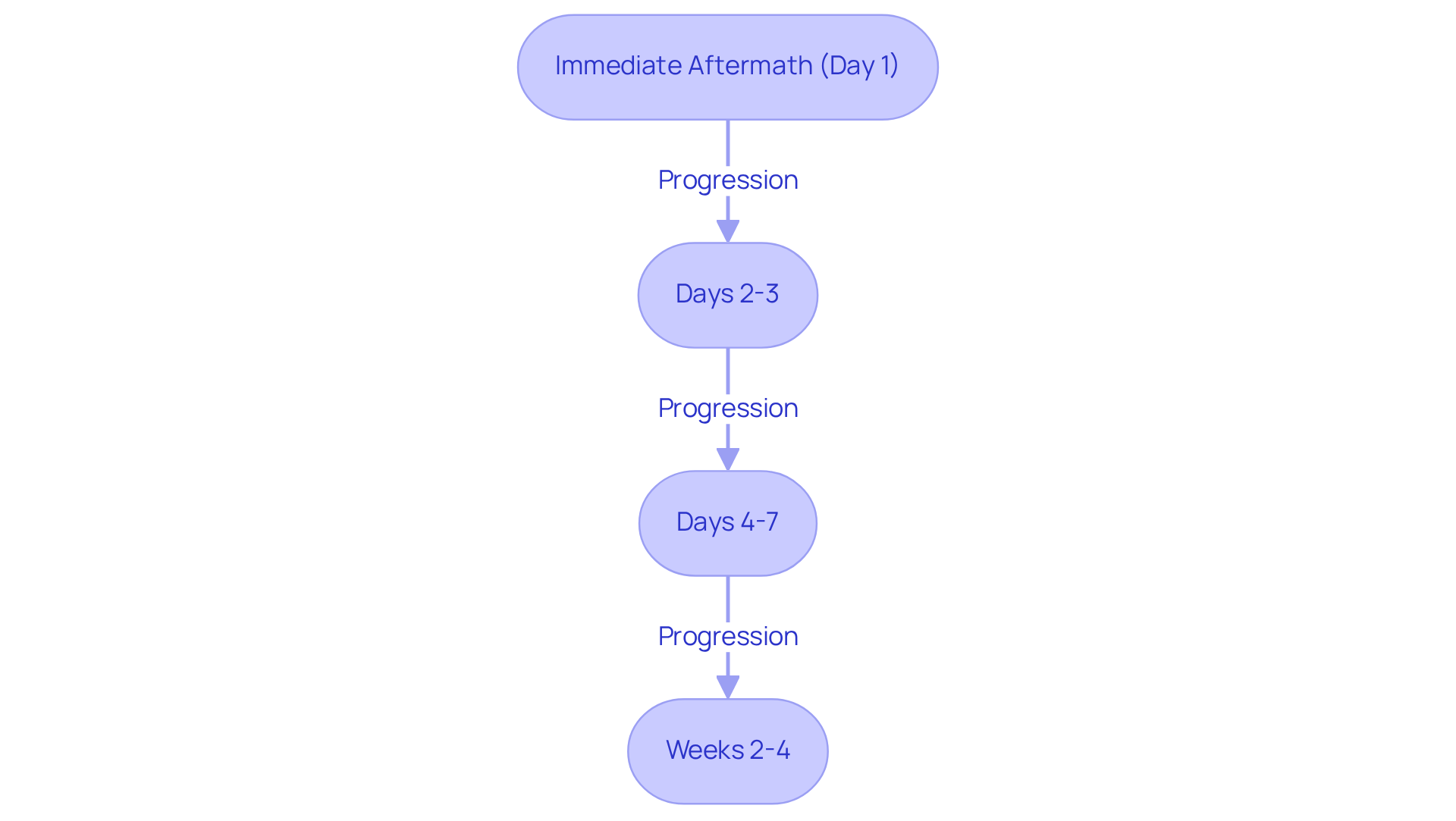
Enhance Recovery: Tips for Optimal Results
To maximize the benefits of microneedling and enhance recovery, consider the following strategies:
-
Stay Hydrated: Aim to drink at least eight glasses of water daily. Adequate hydration is essential for preserving moisture and promoting overall well-being, significantly assisting in the recovery process.
-
Nutrition: Focus on a diet rich in vitamins C and E, omega-3 fatty acids, and antioxidants. Foods such as leafy greens, berries, nuts, and lean proteins are particularly advantageous for tissue repair and can improve the outcomes of microneedling.
-
Avoid Smoking and Alcohol: Both substances can hinder the healing process and adversely affect dermal health. It is advisable to refrain from smoking and alcohol consumption during recovery.
-
Follow Up Treatments: Arrange follow-up sessions as advised by your practitioner to sustain results and further enhance dermal health. Regularity in care can lead to improved texture and appearance over time.
-
Listen to Your Skin: If you notice excessive redness, swelling, or discomfort, consult your practitioner for tailored advice. Attending to your skin's needs is essential for a successful healing process.
By implementing these strategies, clients can ensure a smoother recovery and better navigate the microneedling healing stages to achieve optimal outcomes from their treatments.
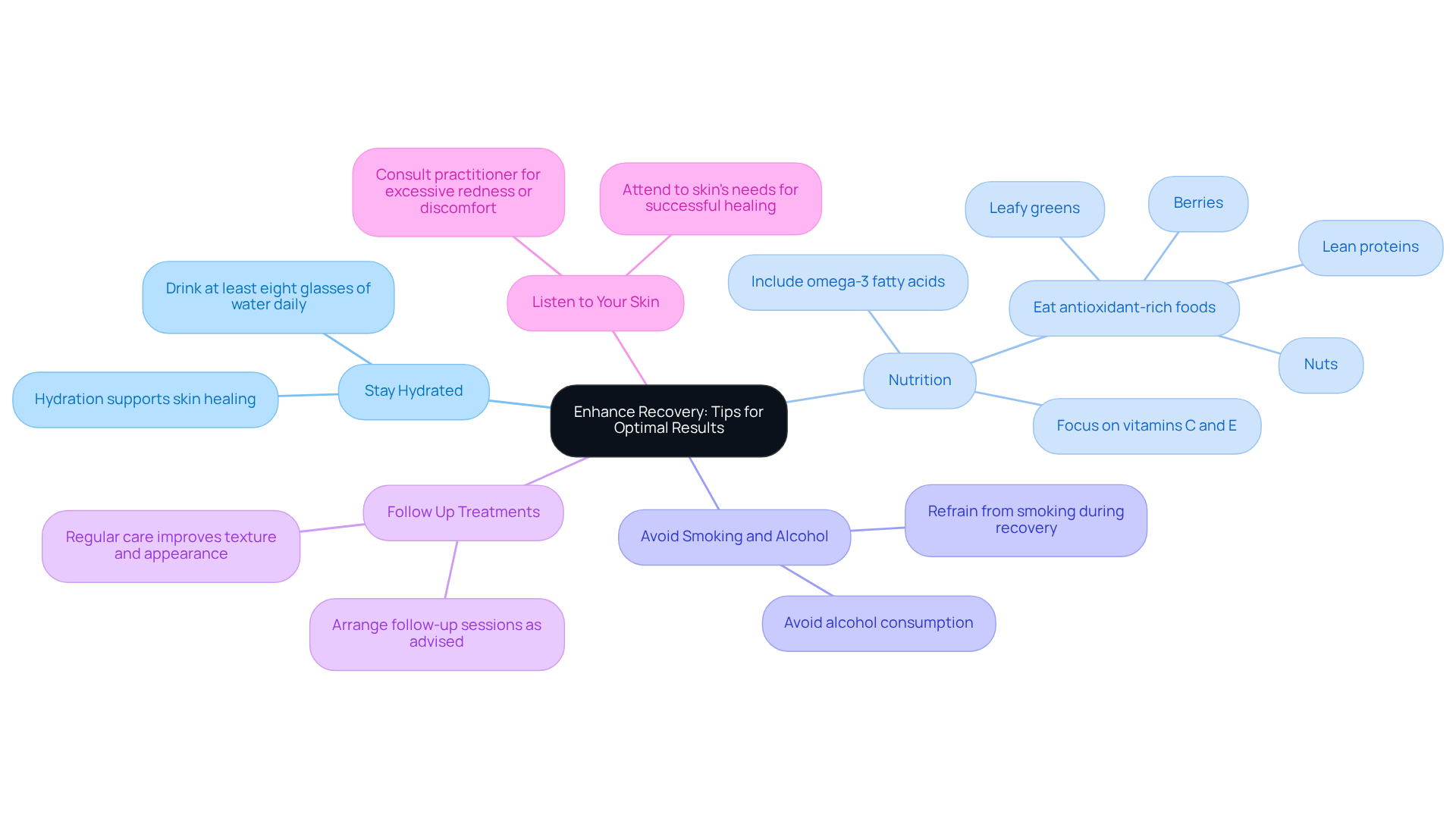
Conclusion
Understanding the healing stages of microneedling is essential for anyone aiming to maximize the benefits of this transformative skincare treatment. Recognizing the importance of proper aftercare and adhering to recommended protocols can significantly enhance skin recovery and lead to optimal results. The journey from initial treatment to full recovery encompasses a series of stages, each demanding specific attention and care.
Throughout this discussion, we have shared key insights on the microneedling process, underscoring the significance of post-procedure care and outlining the expected healing timeline. Maintaining hydration, protecting the skin from sun exposure, and following a nutrient-rich diet are critical components that support recovery. By adhering to these guidelines and understanding what to expect at each stage, clients can navigate their healing journey with both confidence and clarity.
Ultimately, the success of microneedling hinges not only on the procedure itself but also on a steadfast commitment to aftercare. Taking proactive steps to care for the skin post-treatment can enhance the overall outcome, resulting in improved texture, tone, and rejuvenation. By prioritizing these practices, individuals can unlock the full potential of microneedling and relish the lasting benefits of healthier, more radiant skin.
Frequently Asked Questions
What is microneedling?
Microneedling, also known as collagen induction therapy, is a procedure that uses fine needles to create micro-injuries on the skin's surface, triggering the body's natural healing response and boosting collagen and elastin production.
What are the benefits of microneedling?
The benefits of microneedling include improved skin texture, reduced visibility of scars and fine lines, and enhanced absorption of topical products.
How many microneedling sessions are typically needed to see results?
Patients may observe a significant reduction in post-acne scarring after just two sessions, with further improvements following additional treatments.
What post-treatment care is recommended after microneedling?
Recommended post-treatment care includes avoiding direct sun exposure for a week, using a gentle cleanser, and refraining from makeup for 24 to 48 hours after the procedure.
What side effects can occur after microneedling?
Common side effects of microneedling include redness and swelling, which typically last for a few hours to a day.
Can microneedling be combined with other treatments?
Yes, microneedling can be combined with Platelet-Rich Plasma (PRP) therapy to accelerate recovery and enhance collagen production.
How much do microneedling sessions cost?
The cost of microneedling sessions generally ranges from $200 to $800, depending on the specific treatment required.

